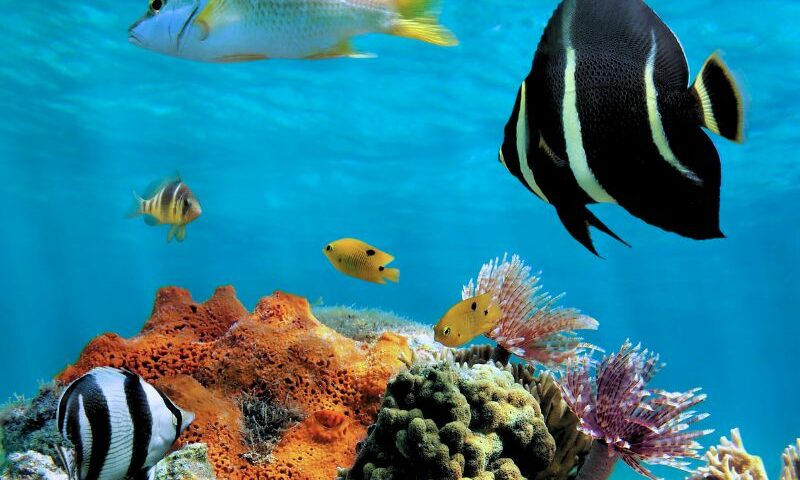Tired of diving without knowing what animals you’re looking at?
Check out this Caribbean fish reef identification guide and enjoy your dives even more.
Discover the real stars of the Caribbean reef.
This guide will help you recognize everything from tiny damselfish to majestic groupers.
Learn about the colors, patterns, and behaviors that make each species special.
Perfect for divers who want to explore the reefs more deeply, spot exotic species, and truly experience the magic of Caribbean marine life.

Best Places for Beginner Scuba Divers Around the World
08/10/2025
Black Friday Scuba Deals, Diving Specials in The Caribbean
04/11/20251. Disk & Large Oval
These fish stand out with their flat, rounded bodies, allowing them to glide effortlessly among coral structures. Their bright colors and unique patterns make them easy targets for reef fish identification. Noticing these traits is key for accurate Caribbean fish identification.
Angelfish
Angelfish are the show-offs of the reef with tall, disk-shaped bodies, vivid blues and yellows, and graceful trailing fins. Their bold colors and elegant shapes make them favorites in reef fish identification and easy to recognize in Caribbean fish identification.
Look at this blog post for more information 5 Types Of Saltwater Angelfish You Can See in The Caribbean.
Queen Angelfish – Holacanthus ciliaris
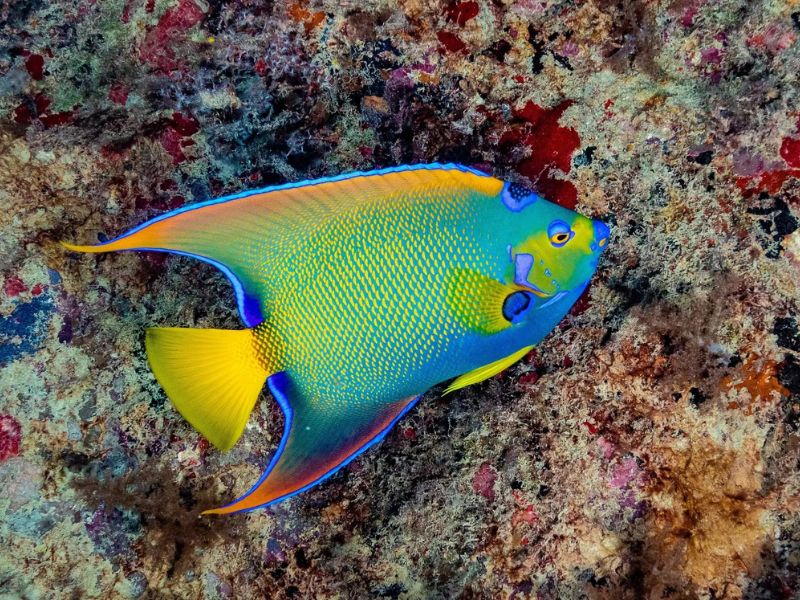
Surgeonfish
Recognized by the sharp “scalpel” near their tails, surgeonfishes often have smooth oval bodies and bright patterns. Spotting this tail blade is key for accurate reef fish identification and Caribbean fish identification.
Doctorfish – Acanthurus chirurgus
Gray body with vertical blue stripes and sharp tail spine; tail spine is distinctive.
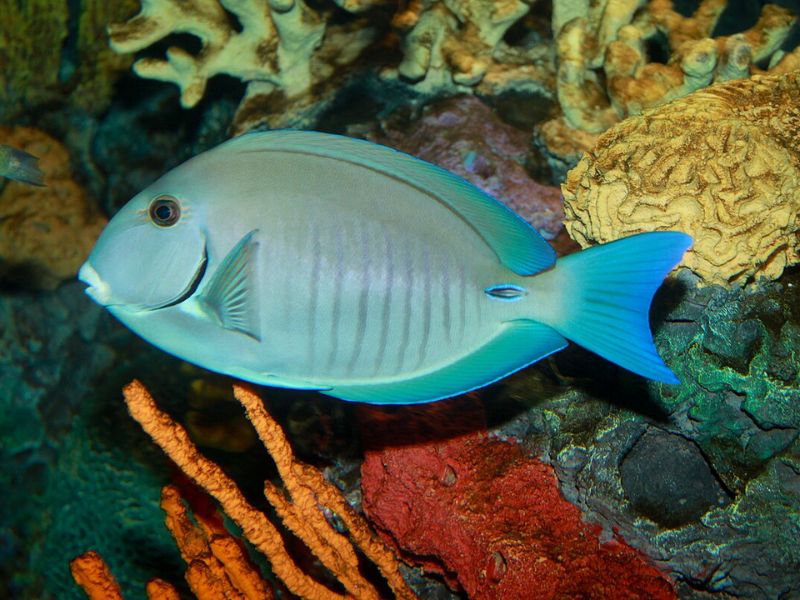
Butterflyfish
Small and delicate with vertical stripes and rounded bodies, butterflyfishes are coral lovers. Their eye-like spots and bright yellow hues are classic clues for reef fish identification and a highlight in Caribbean fish identification.
Foureye Butterflyfish – Chaetodon capistratus
White body with vertical black stripe through the eye and black “false eye” on tail; the false eye is the key feature.
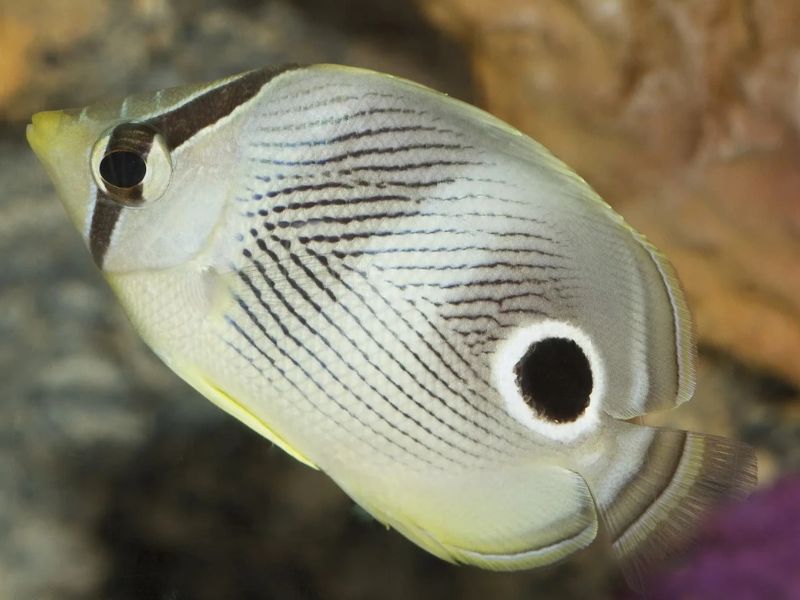
Damselfish
Feisty little defenders of coral patches, damselfishes have oval bodies and vivid colors. Their territorial behavior and size make them an easy find for reef fish identification and Caribbean fish identification.
Sergeant Major – Abudefduf saxatilis
Bold black vertical stripes on a white body with a bright yellow top; stripes make it instantly recognizable.
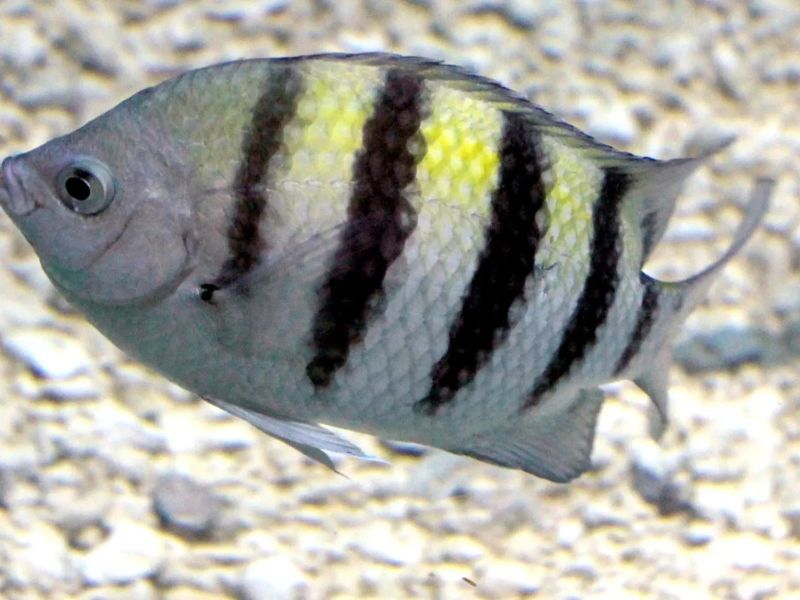
Chromis
Usually shimmering blue or green, chromis swim in groups above coral heads. Their schooling patterns and small oval shape help with reef fish identification and Caribbean fish identification.
Blue Chromis – Azurina cyanea
Vibrant sky-blue body, small and schooling; blue color is the easiest ID trait.
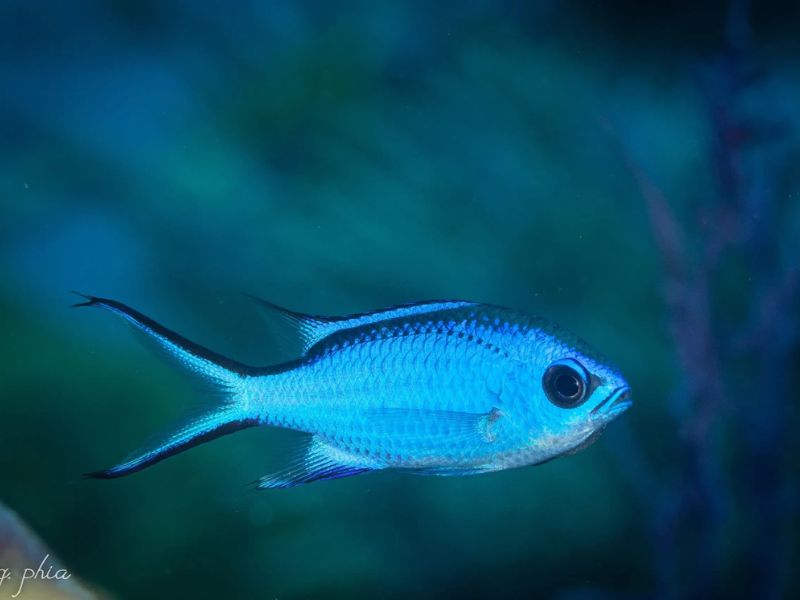
Hamlets
Hamlets come in various color morphs — blue, yellow, barred — but always with a distinct oval form and curious behavior. Their patterns make them stand out in reef fish identification and Caribbean fish identification.
Indigo Hamlet – Hypoplectrus indigo
Rich indigo coloration covering most of the body; deep color is unmistakable.
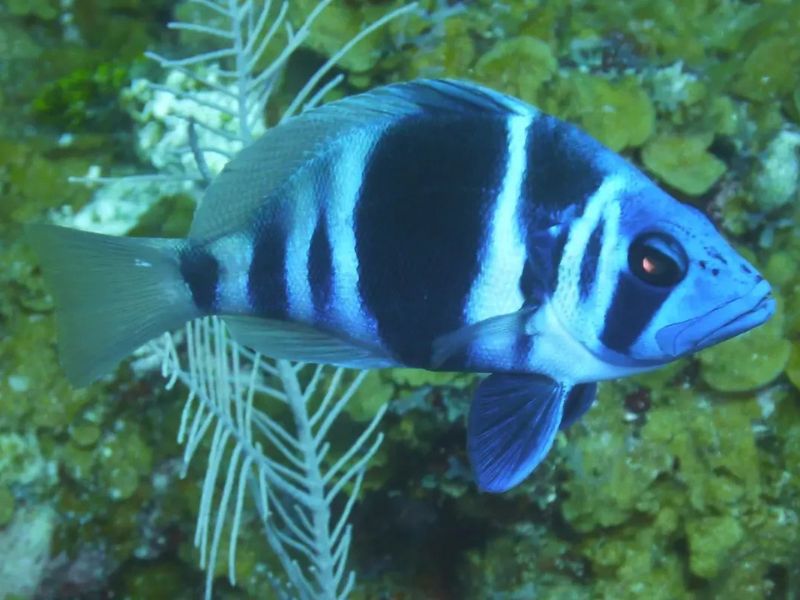
Jacks
Fast, silvery predators with forked tails, jacks cruise the outer reef. Their sleek shape and hunting behavior make them a classic target for reef fish identification and Caribbean fish identification.
Yellow Jack – Caranx bartholomaei
Bright yellow fins and a silvery body; yellow coloration is the standout feature
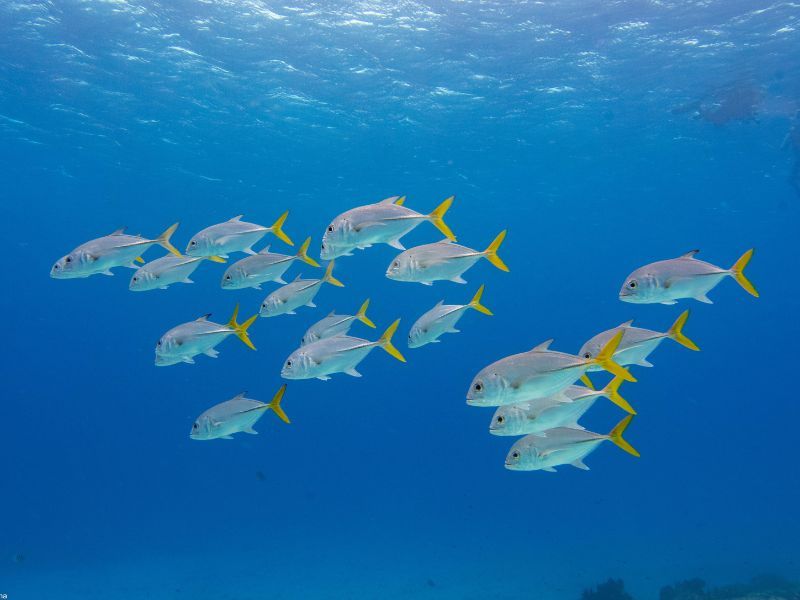
Spadefish
With their flat, spade-like shape and vertical black bars, spadefishes are easy to recognize. Their unique silhouette is a must-know in reef fish identification and Caribbean fish identification.
Atlantic Spadefish – Chaetodipterus faber
Tall, disk-shaped body with vertical black bars; bars and shape are key.
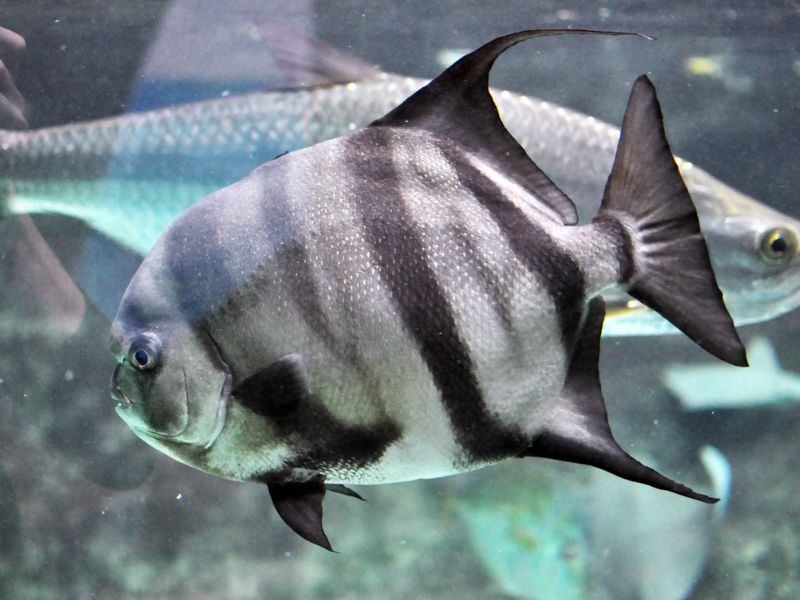
Tarpons
Large, silver giants with big scales and upturned mouths, tarpons often patrol coastal reefs. Their size and shine make them unforgettable for reef fish identification and Caribbean fish identification.
Atlantic Tarpon – Megalops atlanticus
Large silvery body with upturned mouth and prominent scales; size and mouth are defining.
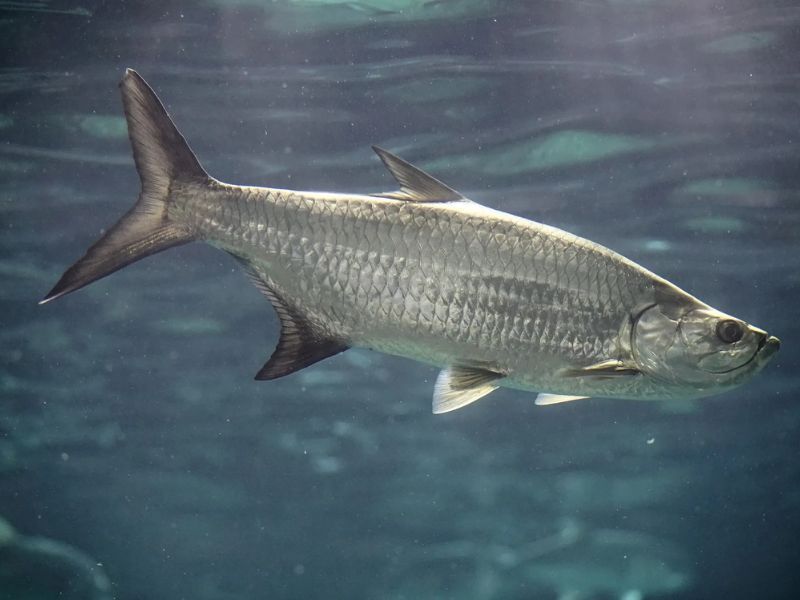
Barracudas
Sleek, toothy, and fast — barracudas are unmistakable hunters. Their long bodies and menacing jaws are standout traits in reef fish identification and Caribbean fish identification.
Great Barracuda – Sphyraena barracuda
Long, slender body with prominent teeth; menacing jaw is signature.
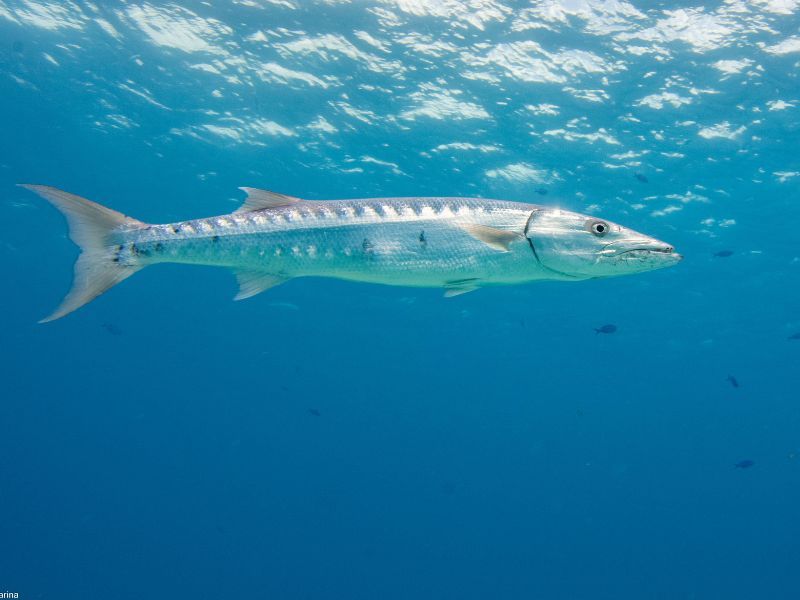
4. Groupers & Seabasses
Groupers and seabasses have large heads, wide mouths, and robust bodies, often hiding in reef crevices. Their size and spotting patterns make them easy to identify for reef fish identification. Observing these features is essential for Caribbean fish identification.
Groupers
Large, stout fish with wide mouths and spotted bodies, groupers often lurk under coral ledges. Their size and shape make them a classic in reef fish identification and Caribbean fish identification.
Goliath Grouper – Epinephelus itajara
Massive, bulky body with mottled gray-brown patterns; sheer size is defining.
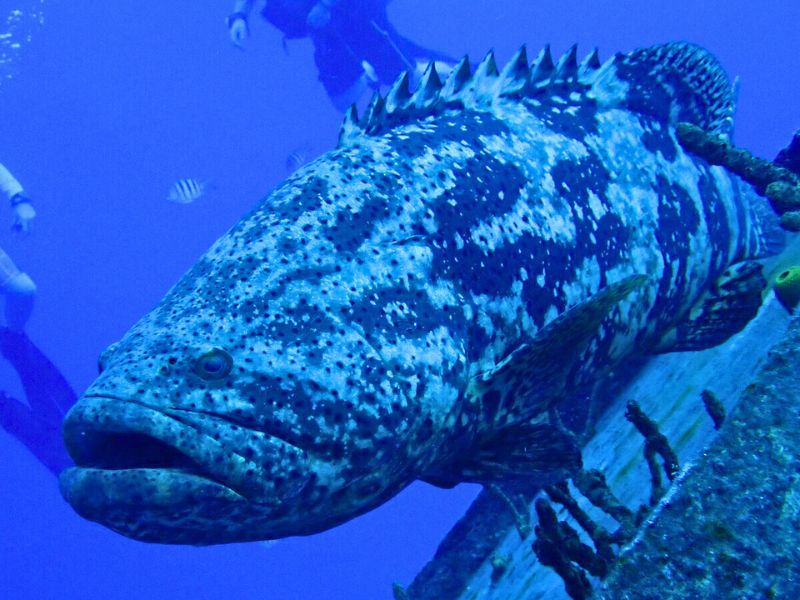
Grunts
Named for the grunting noise they make, grunts have striped bodies and school in large groups. Their sound and markings are a giveaway for reef fish identification and Caribbean fish identification.
French Grunt – Haemulon flavolineatum
Yellow stripes along silver body; stripe pattern is defining.
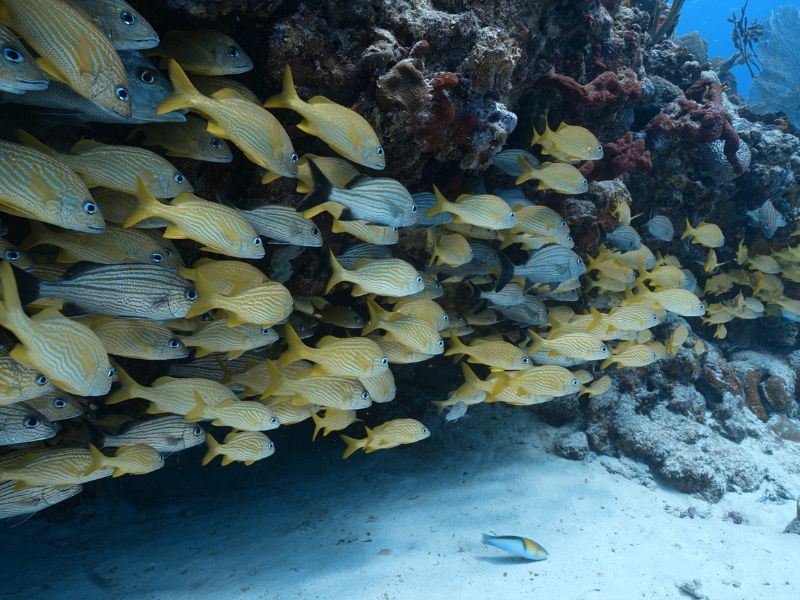
Snappers
With angular heads and sharp teeth, snappers come in red, yellow, or silver varieties. Their color and shape are key clues for reef fish identification and Caribbean fish identification.
Schoolmaster Snapper – Lutjanus apodus
Yellow fins and reddish-silver body; fin color is standout.
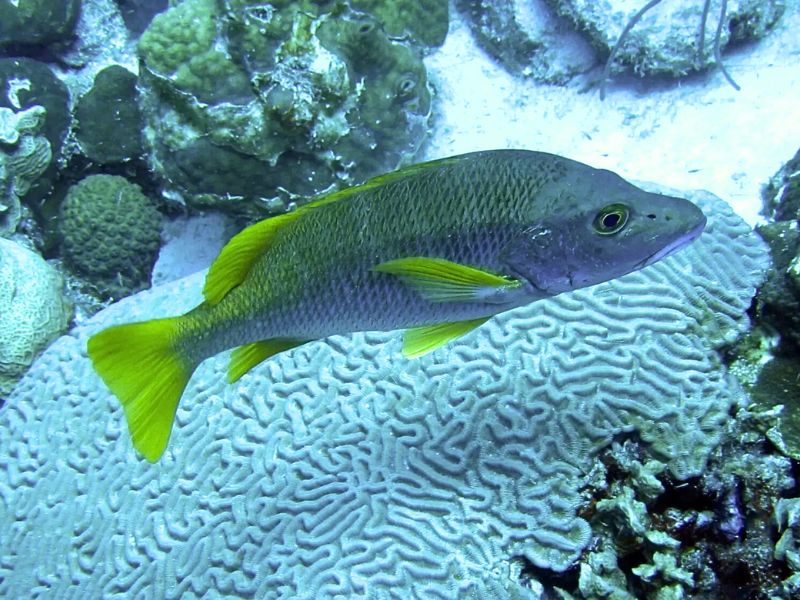
Parrotfish
Parrotfish are bright and beak-mouthed coral grazers that change color as they age. Their rainbow hues and strong jaws make them icons of reef fish identification and Caribbean fish identification.
You can find more information about parrot fish in this article.
10 Parrotfish Facts, 20 Photos, and the 14 Caribbean Species
Blue Parrotfish – Scarus coeruleus
Bright blue, elongated body; solid blue is unmistakable.
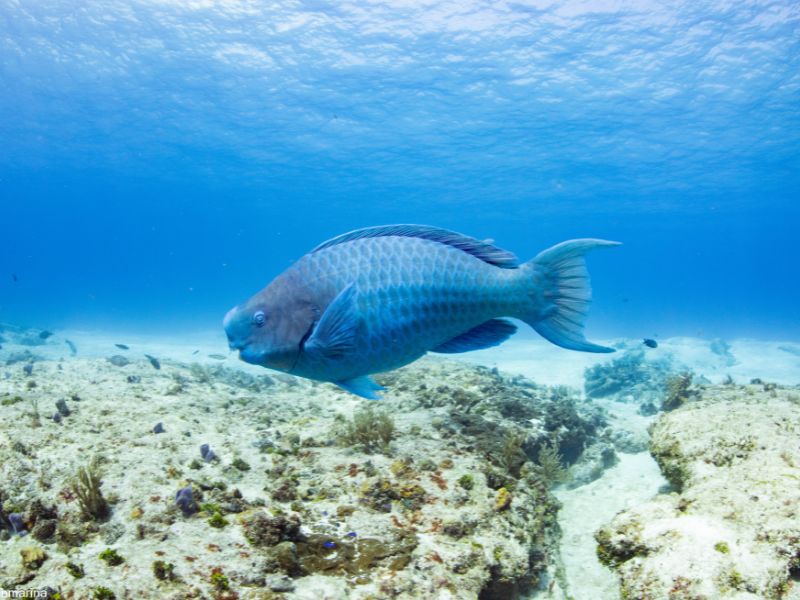
Wrasses
Wrasses are slim, active swimmers with constantly shifting colors. Their long bodies and fluttering fins are easy to spot during reef fish identification and Caribbean fish identification.
Rainbow Wrasse – Thalassoma bifasciatum
Bright green body with pink and blue stripes; rainbow colors are unmistakable.
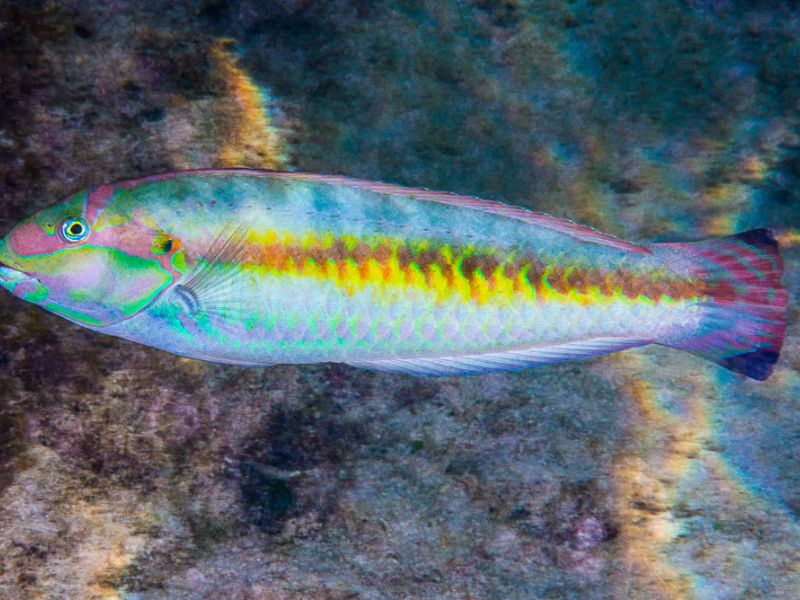
Squirrelfish
With red bodies, large eyes, and spiny dorsal fins, squirrelfishes are classic night reef dwellers. Their features make them stand out in reef fish identification and Caribbean fish identification.
Longspine squirrelfish- Holocentrus rufus
It is a silvery red, sea fish with orange-gold body stripes.
Bright blue, elongated body; solid blue is unmistakable.
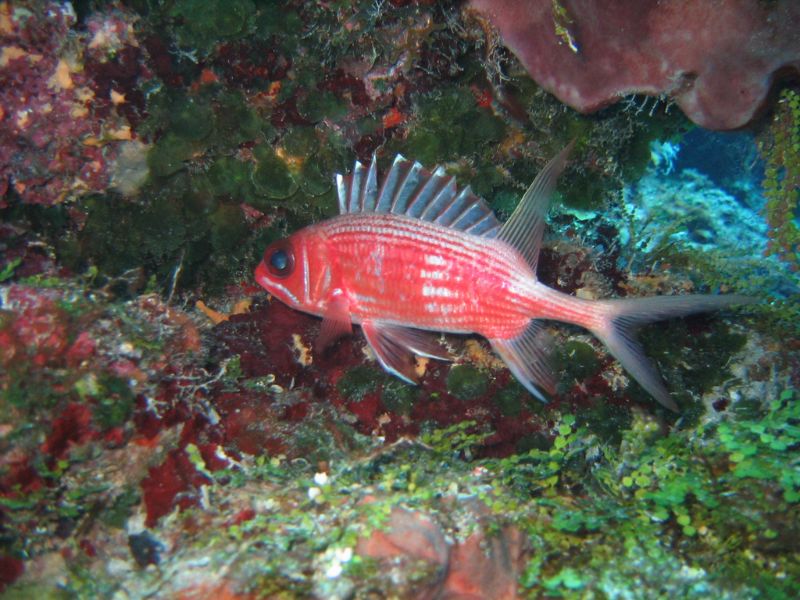
Soldierfish
Closely related to squirrelfishes but with deeper bodies and less spiny fins, soldierfishes prefer caves. Their shape and behavior are key to reef fish identification and Caribbean fish identification.
Blackbar Soldierfish – Myripristis jacobus
Bright red body with a black vertical bar behind the head; the bar is defined.
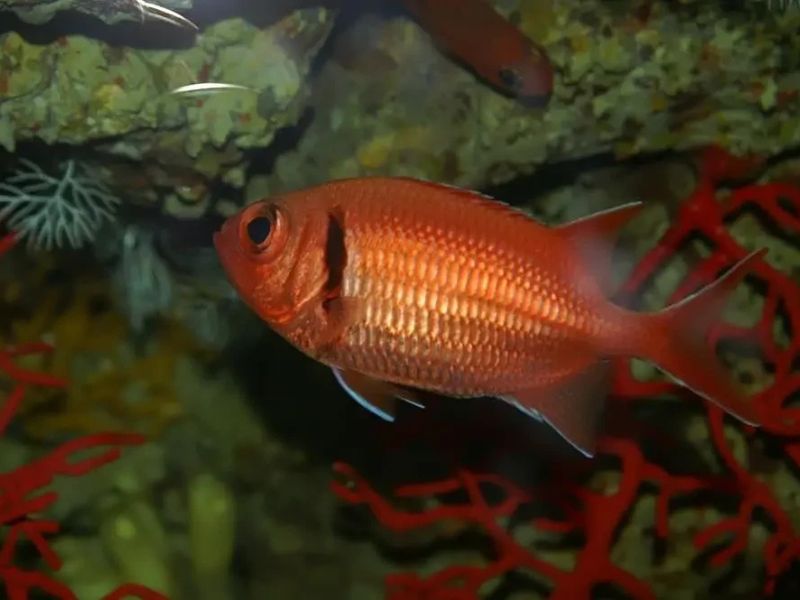
Bigeyes
Their name says it all — big, round eyes adapted for low light. These red fish are easy targets in reef fish identification and Caribbean fish identification.
Atlantic Bigeye – Priacanthus arenatus
Large red body with enormous eyes; giant eyes are the standout trait.
Bright blue, elongated body; solid blue is unmistakable.
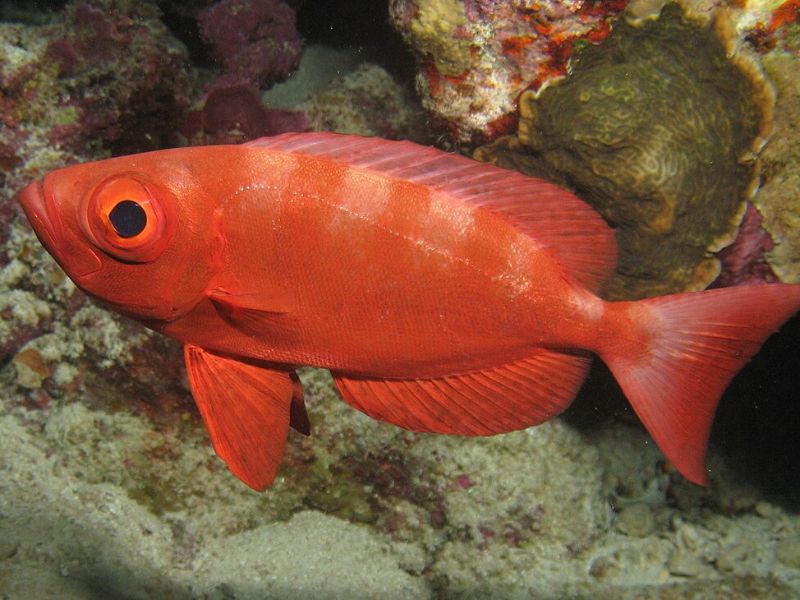
Lizardfish
With elongated, cylindrical bodies and camouflaged patterns, lizardfishes lie in wait on the seafloor. Their flat heads and ambush style make them a target for reef fish identification and Caribbean fish identification.
Sand Diver – Synodus intermedius
Long, slender body with pointed snout; snout shape and sand-burrowing behavior are key.
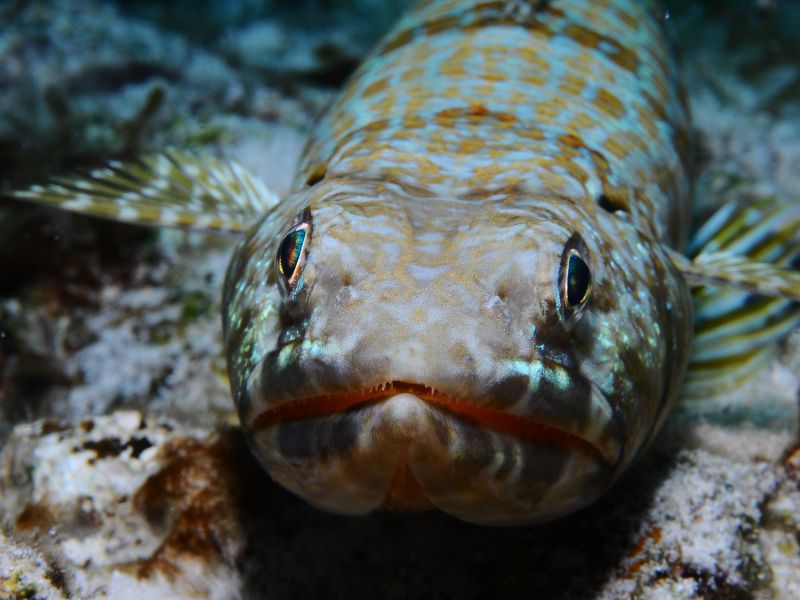
Toadfish
Toadfishes have broad heads, wide mouths, and often camouflaged bodies. Their grumpy appearance is unmistakable in reef fish identification and Caribbean fish identification.
Splendid Toadfish – Sanopus splendidus
Brightly marked with distinctive patterns; patterns are standout.
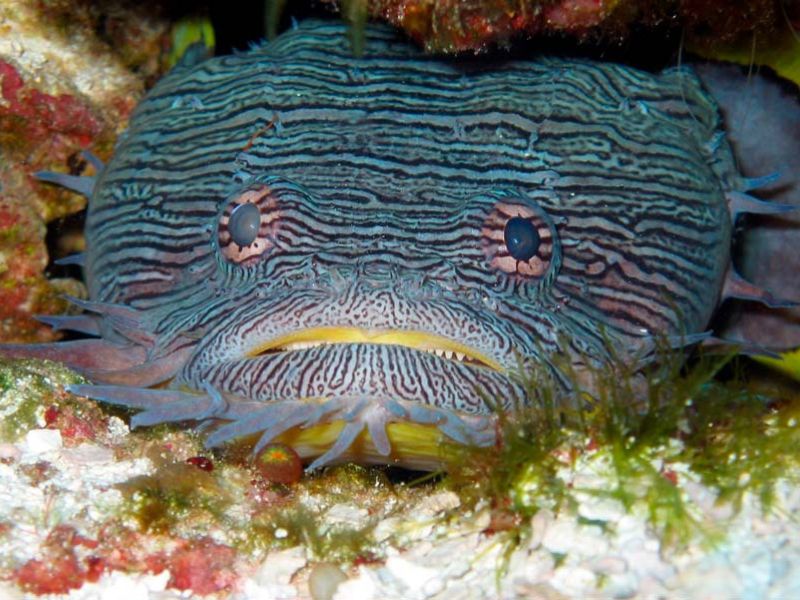
Scorpionfish
Scorpionfishes blend perfectly with rocks and coral, with spiny fins and textured skin. Spotting these camouflaged hunters is a fun challenge in reef fish identification and Caribbean fish identification.
Spotted Scorpionfish – Scorpaena plumieri
Brown body with scattered spots; spots are defining.
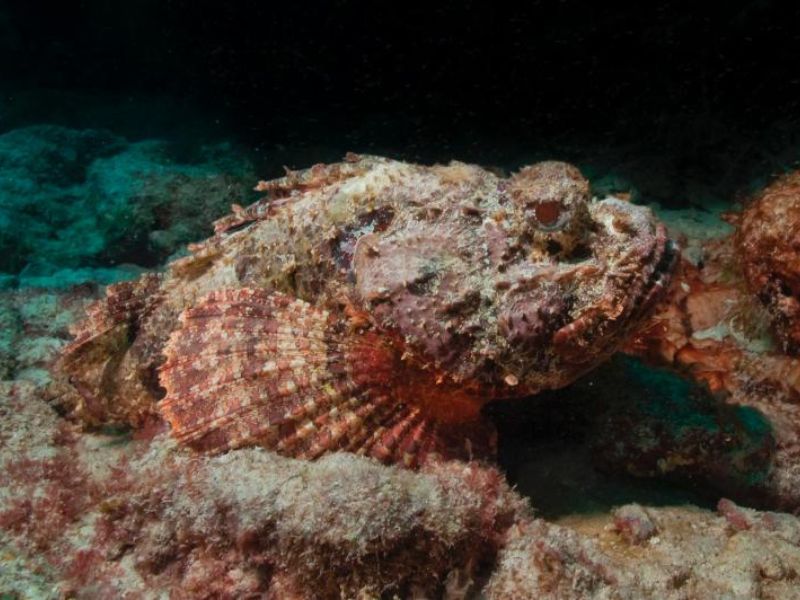
Seahorses & Pipefish
Seahorses are easily recognized by their upright posture, curled tails they use to anchor to corals or seagrass, and bony plates covering their bodies. Pipefish, on the other hand, have long, slender bodies that resemble straightened seahorses, helping them blend perfectly among seagrass and coral branches. Both are masters of camouflage and a true delight to spot for observant divers.
Longsnout Seahorse – Hippocampus reidi
Elongated snout with curled tail; the long snout is standout.
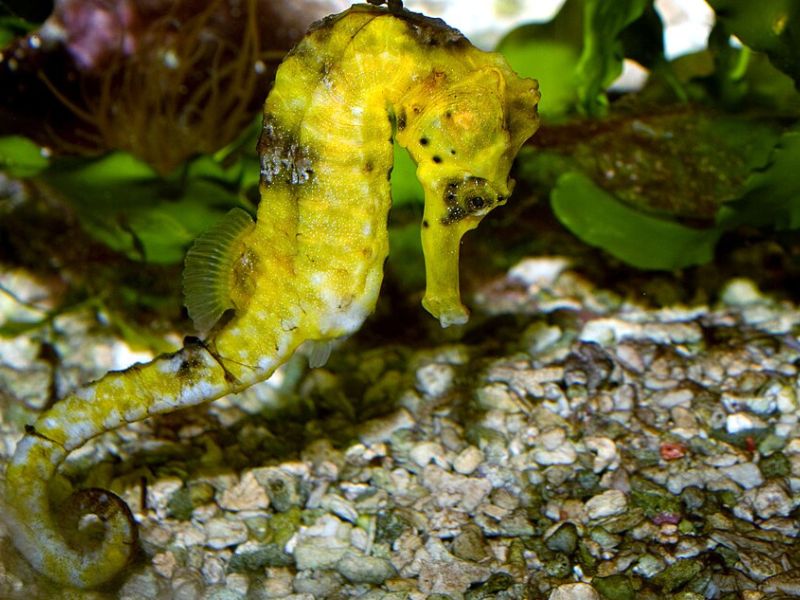
Triggerfish
Triggerfishes have deep, laterally compressed bodies and strong jaws. Their bold patterns and fin “triggers” make them unmistakable for reef fish identification. Recognizing these features also sharpens Caribbean fish identification.
Queen Triggerfish – Balistes vetula
Vibrant blue and yellow pattern; bold colors are standout.
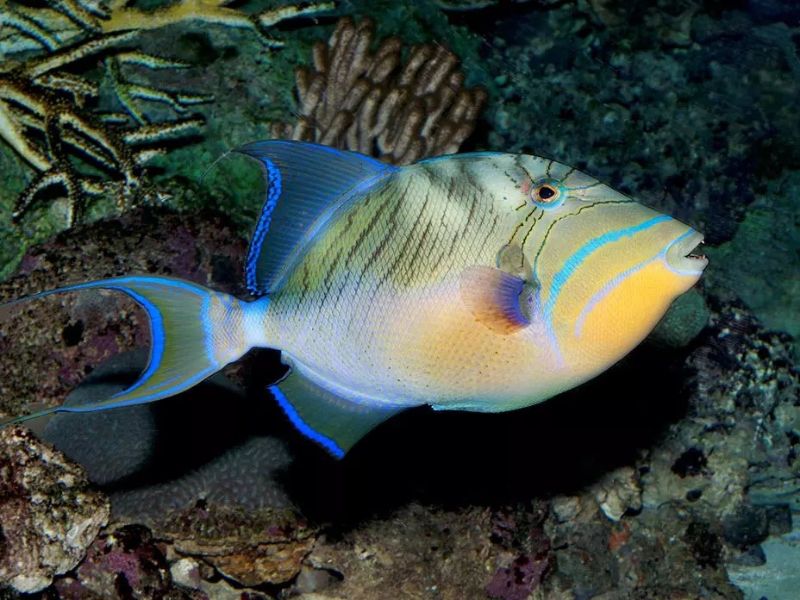
Boxfish
Boxfishes have rigid, box-shaped bodies covered in bony plates. Their unusual cube-like form is a distinctive marker for reef fish identification and Caribbean fish identification.
Smooth Trunkfish – Lactophrys triqueter
Triangular box-shaped body; shape is defining.
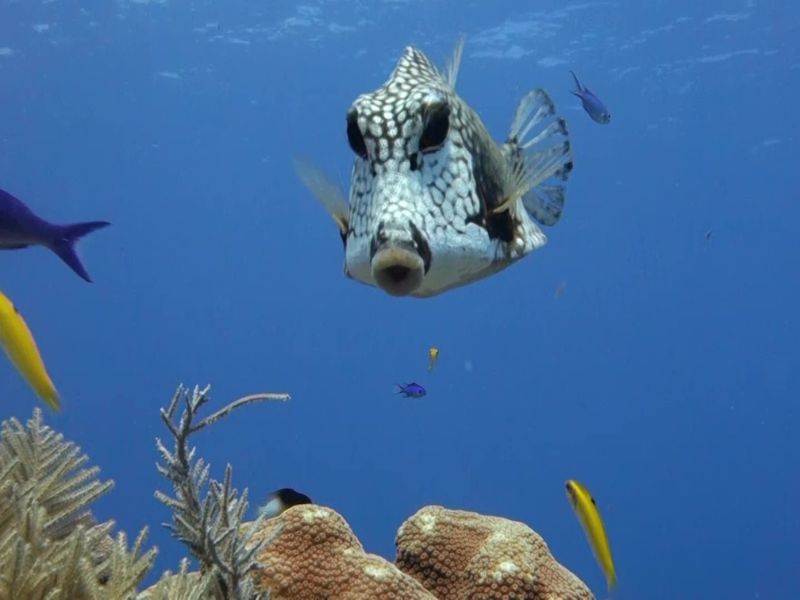
Pufferfish
Pufferfish are small to medium, round, and capable of inflating. Their distinctive shape and patterns are great for practicing reef fish identification and Caribbean fish identification.
Balloonfish – Diodon holocanthus
Inflatable body with long spines; inflation is defined.
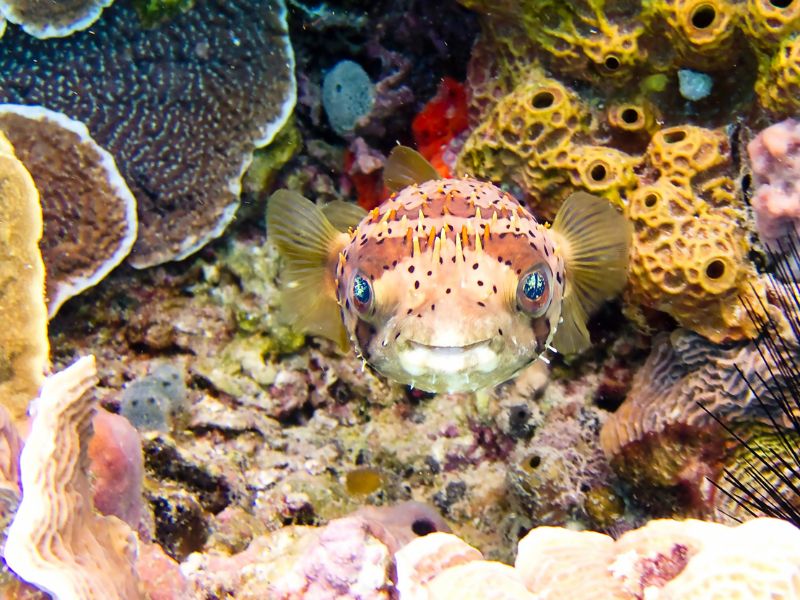
Drums
Drums have elongated bodies with rounded heads and can produce croaking sounds. Their silvery color and shape make them recognizable in reef fish identification and Caribbean fish identification.
Spotted Drum – Equetus punctatus
Black and white striped body with long dorsal; stripes are signature.
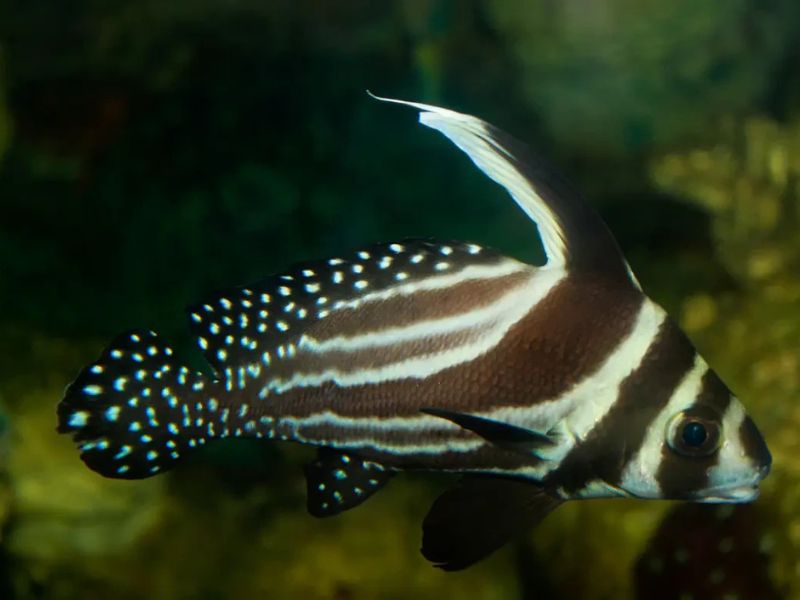
Moray Eels
Morays have elongated, muscular bodies and large jaws filled with sharp teeth. Their distinct heads peeking from crevices are iconic in reef fish identification and Caribbean fish identification.
Green Moray Eel – Gymnothorax funebris
Uniform green body; color is defining.
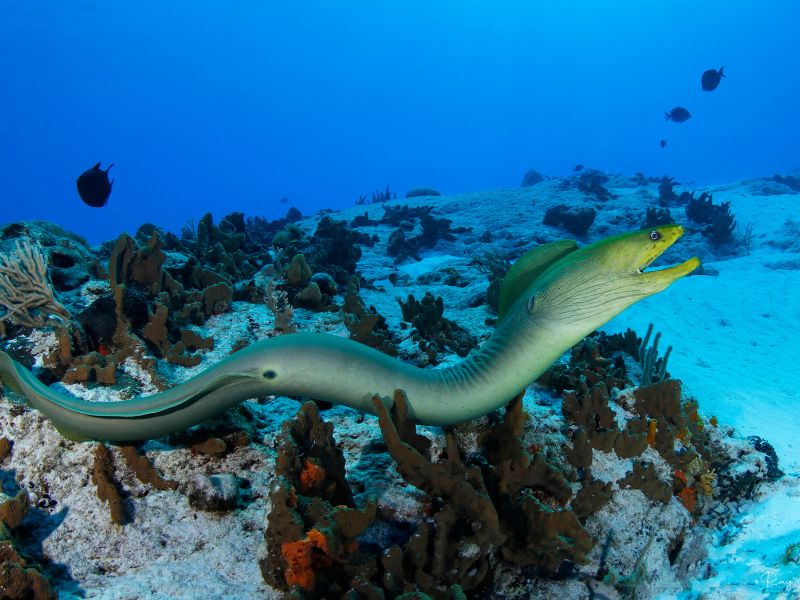
Snake Eels
Slender, snake-like bodies and burrowing behavior make snake eels easy to distinguish. Their shape and hidden lifestyle help in reef fish identification and Caribbean fish identification.
Sharptail Eel – Myrichthys breviceps
Slender body with sharp tail tip; tail shape is defining.
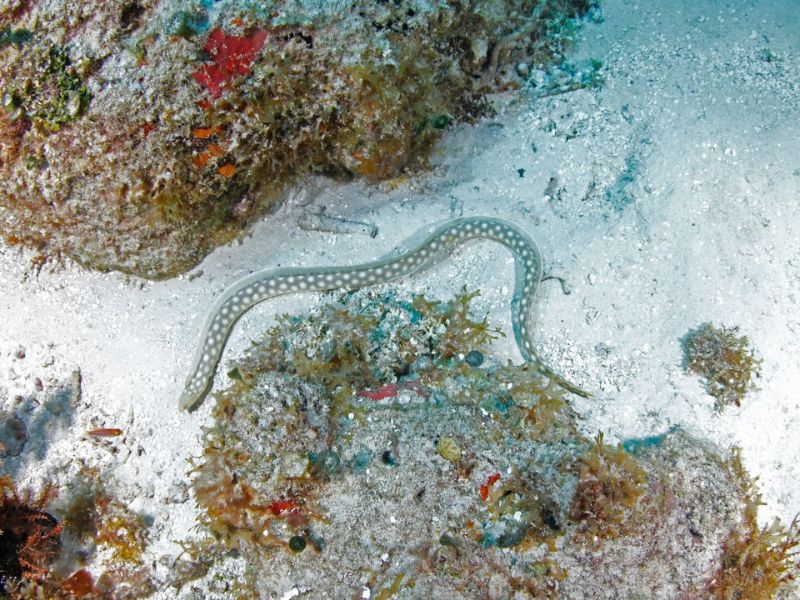
Eagle Rays
Eagle rays have flat, wing-like pectoral fins and whip-like tails. Their gliding style and spotted patterns make them highlights for reef fish identification and Caribbean fish identification.
Spotted Eagle Ray – Aetobatus narinari
Dark body with white spots and long, whip-like tail; spots are defining.
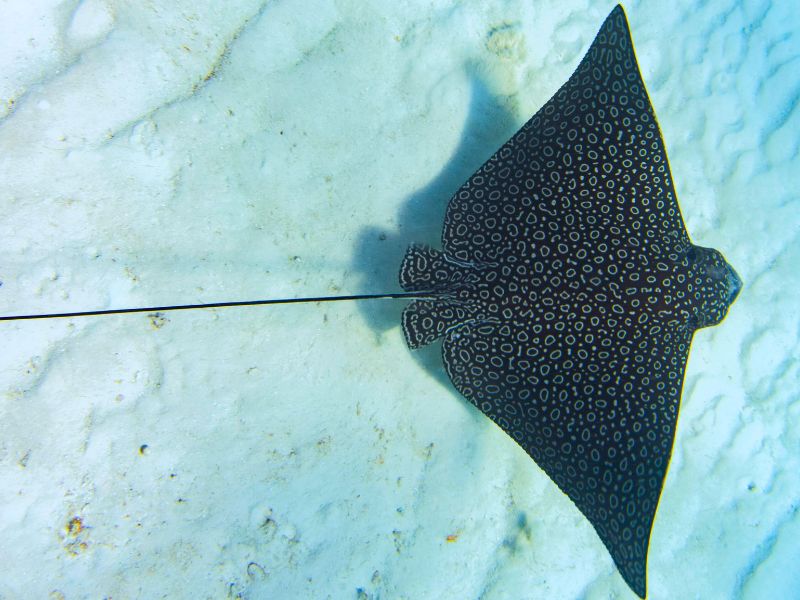
Manta Rays
Manta rays are large, diamond-shaped, and gracefully swim with wide pectoral fins. Their size and cephalic fins are distinctive in reef fish identification and Caribbean fish identification.
Giant Manta Ray – Mobula birostris
Massive, flat body with triangular fins; size and wing-like fins are standout.
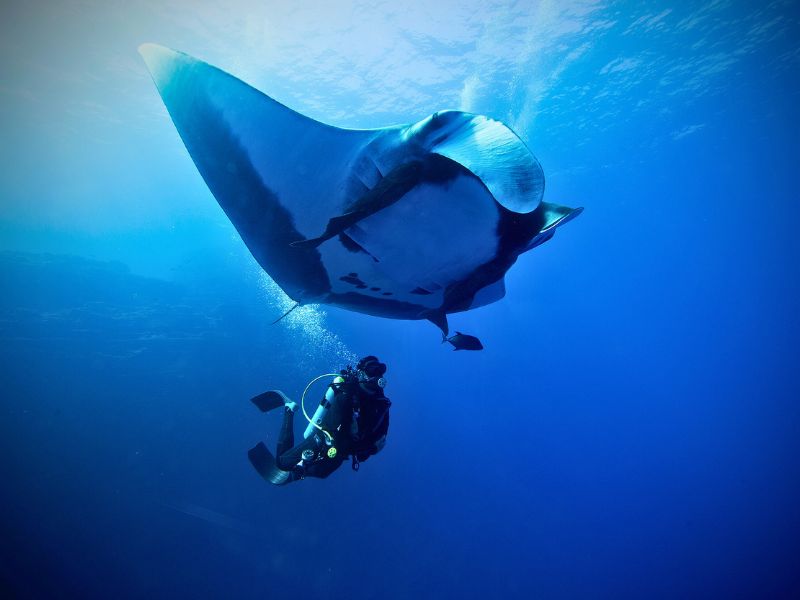
Whale Sharks
Whale sharks are the gentle giants, with massive spotted bodies and wide mouths. Their size and pattern make them unmistakable in reef fish identification and Caribbean fish identification.
Whale Shark – Rhincodon typus
Gigantic, spotted body; gentle filter-feeding giant, spots are signature.
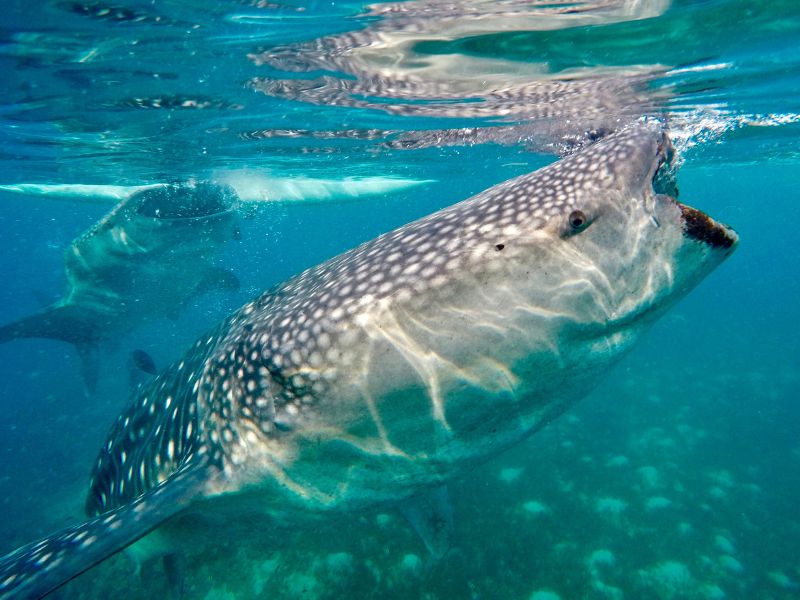
Nurse Sharks
Nurse sharks are slow-moving, bottom-dwelling, and have broad heads with barbels. Recognizing these features helps with reef fish identification and Caribbean fish identification.
Nurse Shark – Ginglymostoma cirratum
Brown, sluggish body; barbels near mouth are defining.
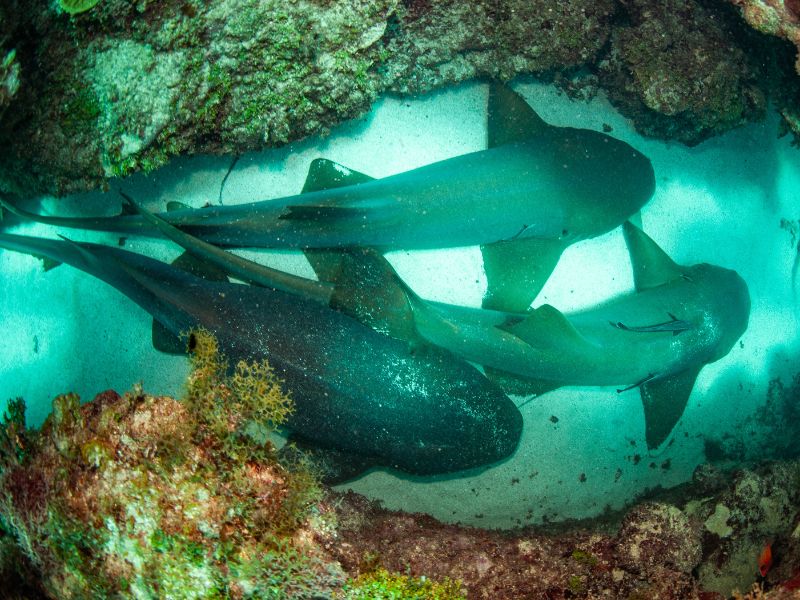
Ready to spot these species in person? Fill out our form and dive into the Caribbean for unforgettable reef fish identification adventures!
CONTACT US FOR
PERSONALIZED ASSISTANCE
Ready to improve your dive skills?
Need more information about the next certification level?
WE ARE HERE TO HELP



